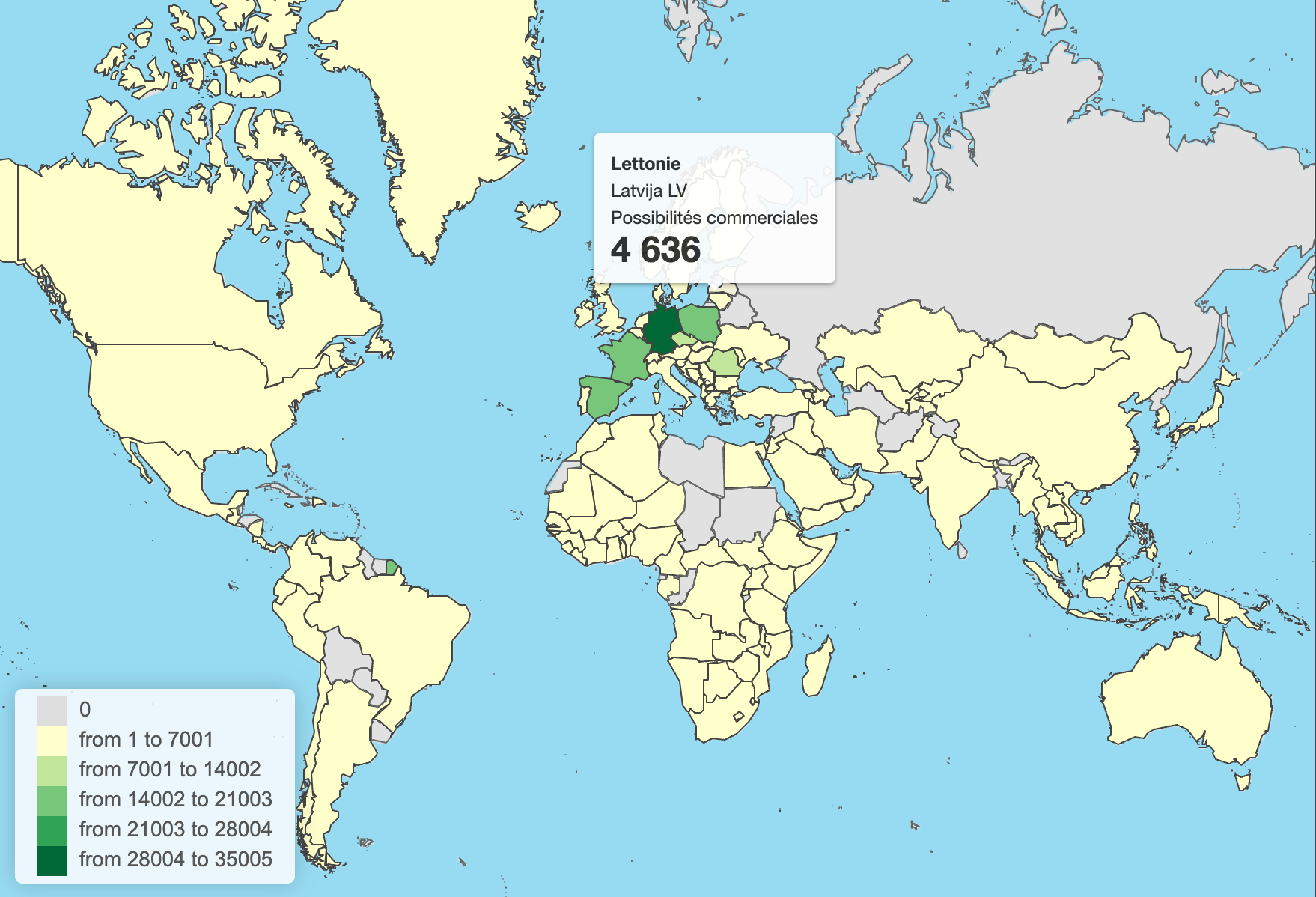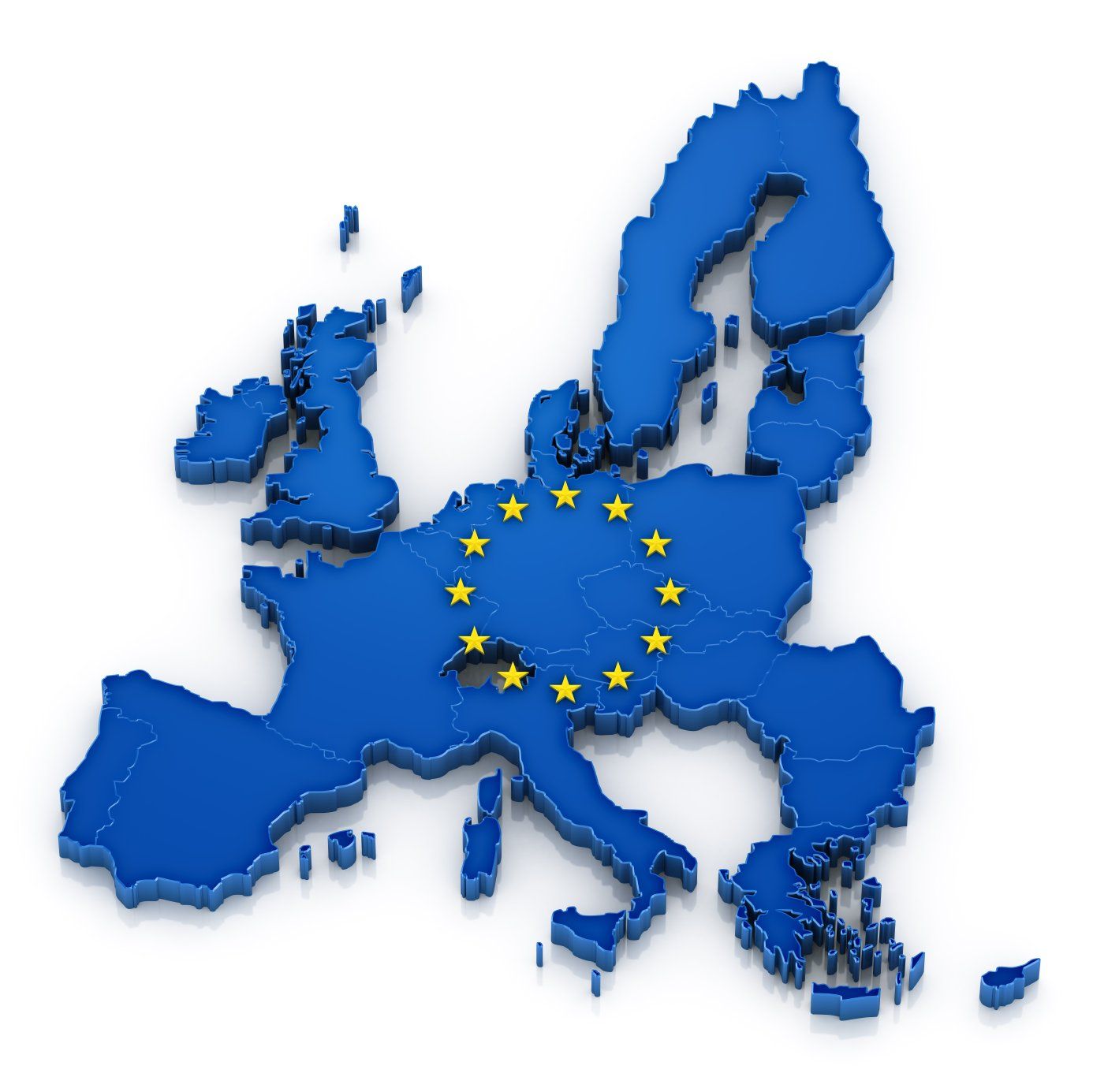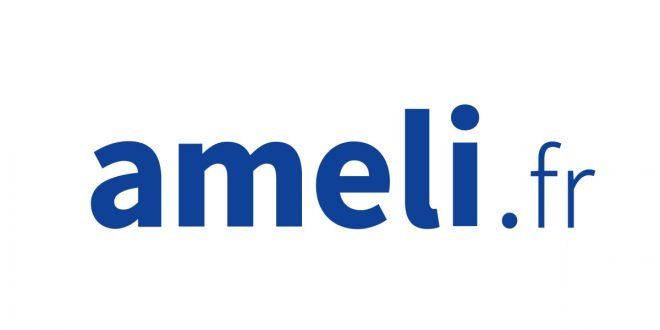
As members of the European Union, the Baltic States follow the same European public procurement procedures as all other EU Member States.
The Comprehensive Economic and Trade Agreement (CETA) between Canada and the European Union gives Canadian companies the same access to public procurement markets in the Baltic States as their European competitors.
The markets in the Baltic countries covered by CETA represent real business opportunities for companies.
I. Development of the Baltic States thanks to European public procurement contracts
II. The constant renewal of invitations to tender and the diversity of the business sectors concerned

Visitors from countries outside the European Union may transit through or stay for short periods in the Schengen area, which comprises the following countries Austria, Belgium, Croatia, Czech Republic, Denmark, Estonia, Finland, France, Germany, Greece, Hungary, Iceland, Italy, Latvia, Liechtenstein, Lithuania, Luxembourg, Malta, Netherlands, Norway, Poland, Portugal, Slovakia, Slovenia, Spain, Sweden and Switzerland. Without a residence permit or long-stay visa in a Schengen country, non-EU nationals need a Schengen short-stay visa to stay in the Schengen zone for a maximum of 90 days (3 months) within a 180-day period. Pursuant to EU Regulation 2018/1806 of the European Parliament and of the Council of 14 November 2018, Canadian nationals are exempt from visa requirements for stays in the Schengen area not exceeding 90 days in any 180-day period. In all cases, whether or not the person is subject to the Schengen short-stay visa requirement, their stays may not exceed 90 days out of a period of 180 days. Here's a handy tool provided by the European Commission to find out how many days you have left to travel: the "Short-stay Visa Calculator" . Get your calculator and enjoy !

What is an abnormally low tender?
Article L. 2152-5 of the French Public Procurement Code defines an abnormally low bid as one "whose price is manifestly undervalued and likely to compromise the proper performance of the contract".
How can candidates justify the amount of their bids?
Article R. 2152-3 of the French Public Procurement Code gives some non-exhaustive examples of justification.
What are the procedures for challenging a decision to reject a bid on the grounds that it is abnormally low?
Three different types of appeal may be used. However, the pre-contractual summary procedure is the most commonly used, as it is used before the contract is signed.
What means can be used to challenge the rejection of a tender?
There are three common ways of challenging a decision to reject a bid on the grounds that it is abnormally low

Any foreign national who wishes to settle permanently in France and work there must apply for a residence permit. The Code on the Entry and Residence of Foreigners and the Right of Asylum provides for a specific residence permit for professional reasons : “ A foreigner who holds the position of legal representative in an establishment or company established in France, as long as he or she is an employee or corporate officer in an establishment or company of the same group, shall be issued with a multi-annual residence permit bearing the words "talent passport" for a maximum period of four years, provided that he or she can prove that he or she meets the remuneration threshold set by decree by the Conseil d'État. ” (article L. 421-19 of the Code). In order to apply for the issuance of such a title, several conditions are required : - Proof of seniority as an employee or corporate officer for at least 3 months; - Prove that you hold the position of legal representative in an establishment or a company established in France; - Prove a gross remuneration at least equal to three times the minimum annual gross legal salary in France for a full-time position, i.e. 59,241 euros since 1 May 2022; - Prove that they have an employment contract or that they are a corporate officer for more than three months in an establishment or company of the same group. The procedure for obtaining a residence permit consists of several stages: 1. Before departure : the visa application The visa allows transit to France. For any permanent residence in France, French law requires that the foreign national has a long-stay visa (VLS-TS) when entering France. This is done online on the government website "france-visas" (https ://france-visas.gouv.fr). The application must then be submitted to the French Consulate in the country where you live. The consulate will examine your application and issue the visa. 2. On arrival in France : validation of the long-stay visa All long-stay visas must be validated within three months of arrival in France by the Ministry of the Interior. This is done exclusively on a platform dedicated to "talent passport" residence permit applications. 3. The final stage : applying for a residence permit The residence permit is the document that allows you to reside permanently in France. The "talent passport" or "social representative" residence permit can be valid for up to four years. The application for the issuance of the "talent passport" "social representative" residence permit is made on the same platform as the one used for the validation of the visa. The prefecture of the foreign national's place of residence will process the application and, in the meantime, will issue a provisional residence certificate. If you would like further information on immigration, do not hesitate to contact our team.

The list of products and services (LPP) contains all the products, care and medical procedures that are reimbursed by the French health insurance system . The article L. 165-1 of the Social Security Code states that : "R eimbursement by the health insurance scheme of medical devices for individual use, tissues and cells derived from the human body, whatever the degree of transformation, and their derivatives, health products other than medicines referred to in Article L. 162-17 and associated services and adaptations is subject to their inclusion on a list drawn up after the opinion of a commission of the High Authority for Health referred to in Article L. 161-37 ". Registration on the list of reimbursable products and services (LPPR) provided for in Article L.165-1 of the Social Security Code is the result of a decision by the Minister responsible for Social Security and the Minister responsible for Health, following the opinion of the National Commission for the Evaluation of Medical Devices and Health Technologies (CNEDiMTS). In order to obtain registration on the LPP, an application file must be submitted according to a specific procedure (I). In addition, the file must contain elements that will allow the administration to make a decision (II). Finally, the judges have to interpret the legal criteria for the registration on the LOB (III). I) Filing the application for registration The application file to the CNEDiMTS is dematerialized and is done via the SESAME platform. To submit a file, you must first create an access account with the corresponding form, to which a maximum of two people will have access. They will be the account managers. To create this account, you need the company's SIRET number and a certificate signed by its legal representative delegating the persons mentioned to be "account managers". The registration request file must include three parts : Part 1: summary and identification of the application ; Part 2: medico-technical file ; Part 3: economic file Parts 1 and 2, which include the identification of the application and the "medico-technical" file , must be submitted to the CNEDiMTS via the SESAME platform, which will issue an advisory opinion. At the same time, t he entire economic section must be submitted directly to the Comité économique des produits de santé (CEPS), which will set a price and a tariff. A fee of 3220 euros must be paid. II) The content of the registration application A) The documents making up the file 1/ Identification of the application : To identify the application for registration in the LPP, it will be necessary to inform : The applicant : this is the manufacturer, agent or service provider, the single correspondent or the signatory of the agreement with the CEPS. The administrative information such as the CE marking for example. The type of the request , i.e. whether it is a registration, a modification or a renewal. The product or service concerned : if it concerns a product or a product associated with a service. 2/ The medico-technical file : The medico-technical file that is required generally includes: Descriptive information about the product with technical characteristics. A description of the mode of action on the pathology or disability. In case of use of the medical device, a description of the associated acts, services and organizational aspects is required. Identification and selection of available clinical data , i.e. a systematic literature search, but also a post-registration study. A demonstration of the expected and rendered service claimed by the applicant with the interest of the product, the concerned pathology, the therapeutic alternatives or the compensation of the current handicap, an analysis of the available data and the quality of the demonstration, the ongoing studies, the place of the product in the therapeutic strategy. The medico-technical file must also contain : A "public health interest" section , with the transferability of trial results to practice, the potential impact on the health of the population, the foreseeable impact on the organization of care, the foreseeable impact on public health policies and programs. A section on the applicant's proposals on the conditions of prescription and use. A section on the demonstration of the improvement in the expected and rendered service. A "target population" section , which is the population likely to benefit from the product or service. More specifically, a quantitative estimate must be made for each indication. The step-by-step reasoning must be shown : The population corresponding to the targeted pathologies The proportion of patients diagnosed The proportion of patients likely to be managed The proportion of patients likely to be affected by the medical device. In addition to this, a table summarizing material safety data from France and abroad over a period of 5 years is requested, as well as an appendix containing the clinical data on which the argument is based and a summary of the general documents attached to the application. 3/ The economic file : The economic file is composed as follows : For non-generic medical devices : 10 USB sticks and a paper version are required. The content of the files on each USB stick consists of a letter of application for marketing authorization and its amendments, economic file, transparency file, possible annexes and bibliography. For generic medical devices : 8 USB keys and a paper version are required. The content of the files on each USB key contains a marketing authorization application letter and its corrections and a price request form. B) Substantive conditions to be fulfilled The article R165-2 of the Social Security Code states that in order to be included on the list, the expected service of the product or service must be evaluated " according to the following criteria : 1° The interest of the product or service with regard to, on the one hand, its therapeutic, diagnostic or disability compensation effect as well as the undesirable effects or risks associated with its use, and on the other hand, its place in the therapeutic, diagnostic or disability compensation strategy, taking into account other therapies or means of diagnosis or compensation available; 2° Its expected public health interest, including in particular its impact on the health of the population, in terms of mortality, morbidity and quality of life, its capacity to meet a therapeutic, diagnostic or disability compensation need that is not covered, taking into account the seriousness of the pathology or disability, its impact on the health care system and its impact on public health policies and programs. Products or services whose expected service is insufficient to justify registration for reimbursement are not included in the list . " III) The interpretation of the legal criteria by the French High Administrative Court In a ruling dated December 31, 2019 (no. 420255), the High Court indicated that any medical device whose file includes the data that allowed it to obtain the CE mark is not " automatically registered on the list of reimbursable products and services " . In a judgment date d July 24, 2019 (No. 419447) , the High Court ruled with regard to the criterion concerning "public health interest" that " a weak symptomatic effect " of the medical device is not sufficient to justify its registration for reimbursement. Similarly, the High Court ruled that the opinion of the CNEDiMTS, which "considered that the expected service of this device was sufficient for registration on the list of products and services mentioned in Article L.165-1 for three years, while deeming the improvement of the expected service to be minor " does not justify registration on the list of reimbursable products and services. (Ruling of 06/05/2019, n°415410). If you wish to apply for registration for one of your products or services in France , contact our team .

To study in France, Canadian students benefit from the 2015 Franco-Canadian agreement (I). And, since 2021, Canada has been part of the "Etudes en France" platform, which is an online service that brings together all the steps and simplifies the procedure (II). Finally, Canadian students can renew their residence permit (III). I) The Franco-Canadian agreement on youth mobility of January 7, 2015 This agreement of January 7, 2015 was created to simplify and facilitate administrative procedures for young Canadians and French youth. It applies to anyone between the ages of 18 and 35. This agreement provides for 4 categories of young nationals : Young professionals, wishing to go to France for professional development by means of a salaried work experience under a fixed-term work contract. Canadian students wishing to complete part of their university curriculum in a French institution under an inter-university agreement. Students or young people in training, enrolled in a secondary or higher education institution or in a training center, wishing to complete a practical internship in France in connection with their studies or training program. Young people wishing to make a tourist and cultural discovery stay in France and wishing to work there occasionally to supplement their financial resources. The documents to be produced in support of the application for a stay are : A Canadian passport with an expiry date of six months after the date of the end of the stay in France a dated and signed application form an identity photograph a student card with a copy of both sides a letter of acceptance from the home and host universities proof of sufficient resources for the beginning of the stay This agreement claims to "facilitate" the procedures for obtaining a student visa, but in practice, it is necessary to go through the normal procedure to obtain a visa . (II) II) Since 2021, Canada has joined the Études en France platform To obtain a visa to study in France, you must be 18 years old, have chosen a course of study and be accepted by a higher education institution. The Study in France portal has been set up to facilitate the pre-registration process for more than 280 universities and schools in France and to help with visa applications. Since 2021, Canada is part of it. Registering on Etudes France does not allow students to free themselves from the steps to be taken with the French authorities in Canada to acquire the visa that will allow them to come legally to France. Two types of visas are particularly relevant to students : The short stay visa is for students who have a training of less than 3 months (A) on the contrary of the long stay visa which allows to stay in France between 3 months and 1 year. (B) A) The visa for short stays There are two categories : Short-stay "competition student" visa : it allows non-European students to come to France to take a competition or an admission interview in a higher education institution. It can only be issued if the result of the exam or interview is known within 3 months. To apply for a visa, you must contact the embassy or consulate of the country. Short stay Schengen visa : it allows you to stay in a Schengen country for a maximum of 90 days: the reason for a short training course allows you to be granted a visa. However, nationals of many countries are exempted from the Schengen short stay visa to enter and stay in Schengen countries for a maximum of 90 days. This is the case for Canada. If at the end of the validity of the short stay visa, the foreign student has passed an entrance exam to a school, he/she is not obliged to go through a "VLS-TS student". In this case, he/she can directly apply for a student residence permit at the prefecture. B) The visa for long-term stays This type of visa covers 3 categories : The student VLS-TS : it allows students to come to France for a period of 4 months to 1 year to pursue higher education. It allows students to travel freely in all countries of the Schengen area. It also allows students to work 964 hours per year, or 20 hours per week, to supplement their income. This visa allows you to benefit from VISALE (the free student rental deposit) and to receive a housing allowance from the Caisse d'allocation familiale (CAF). This visa allows you to extend your stay beyond the validity of your residence permit. The VLS-T student visa allows students to stay in France from 4 to 12 months. It allows you to travel freely in all countries of the Schengen area. It allows access to social security. This visa is not validated by the prefecture upon arrival, but it does not allow you to work during your studies. Moreover, this visa does not allow you to benefit from VISALE, nor from the housing allowance of the CAF. This visa does not allow you to extend your stay beyond the validity of your residence permit. The long-stay visa for trainees : this visa allows you to stay in France for more than 3 months for an internship. This internship must be part of a professional training program and take place in a company or a public hospital. It must be validated with the French Office of Immigration and Integration upon arrival in France. For this visa, a tripartite internship agreement approved by the prefect and signed by the student, the employer and your training institution is required. III) The "student" multi-year residence permit After one year in France, the student can apply for a multi-annual residence permit for "students". The card is issued for a period equal to the remaining duration of the study program. The student must prove the real and serious nature of his or her studies : attendance exam results diploma obtained explanation in case of change of course If you wish to come and study in France, we can assist you in your dealings with the French authorities as well as with any problems you may encounter in France.

The European Union (EU) sets up programs to support businesses (I). These programs benefit primarily small and medium-sized enterprises (SMEs), which are the engine of the European economy (II). I) The European definition of the SME A. The European Commission defines an enterprise "as any entity, regardless of its legal form, engaged in an economic activity". The primary factor is the economic activity and not the legal form. This means that self-employed persons, partnerships and associations regularly involved in an economic activity can be considered as enterprises. B. To qualify as an SME, 3 criteria must be met : Employment of less than 250 persons Annual turnover not exceeding EUR 50 million ( Article 28 of Council Directive 78/660/EEC of 25 July 1978 based on Article 54(3)(g ) of the Treaty on the annual accounts of certain types of companies ( OJ L 222, 14.8.1978, p. 11) or annual balance sheet total not exceeding EUR 43 million ( Article 12(3) of Directive 78/660/EEC, Chapter 2 ). The thresholds are calculated differently for each of the following three categories of company: independent company, partner company and affiliated company. C. Among SMEs, there are three different categories of enterprises : The autonomous enterprise : this is the one that is totally independent or has entered into one or more minority partnerships (less than 25% each) with other enterprises. The partner enterprise : the enterprise holds a participation equal to or greater than 25% of the capital or voting rights of another enterprise or another enterprise holds a participation equal to or greater than 25% in the enterprise in question. Related company : if the holdings with other companies exceed the 50% threshold, the companies are considered related. A subsidiary, a company whose capital is owned for more than 50% by another company, is therefore a related company. The result of the calculation of the thresholds will determine whether the company complies with the European definition of an SME and therefore whether it is eligible for European aid specific to SMEs. If you would like to know more about the European SME status, the criteria and thresholds to be checked, the data to be taken into consideration, the calculation of the number of employees, and how to calculate the thresholds according to the three categories of companies, do not hesitate to contact us. II) Three examples of European funding A. COSME: the program for the competitiveness of SMEs and enterprises This program intervenes for the development of competitiveness as well as for the sustainable development of European companies. For the period 2021/2027, the budget is 4.2 billion euros, 60% of which is distributed through financial instruments. This program includes 4 objectives : Access to finance: "risk capital" and "loan guarantee" facilities. Access to the European Union market: support and advisory services to companies with, for example, the development of industrial policy cooperation. Improvement of the framework conditions for competitiveness. Promotion of entrepreneurship and entrepreneurial culture: e.g. the Erasmus program for young entrepreneurs. This program is aimed at the 27 member states of the European Union, but also at third countries . It is aimed at entrepreneurs, companies, SMEs, business support organizations, but also at financial intermediaries. An example is the Belgian group Technopolis, a consulting firm for the evaluation of science, technology and innovation. The group received 11.33 million euros. B. The Horizon Europe program for research and development The Horizon Europe program mainly finances collaborative research, development and innovation projects in areas such as generic and industrial technologies, but also in societal challenges (health, food safety, clean energy, etc.). This program can also fund more specific projects such as the "SME instrument" to enable SMEs to develop more easily on the market when they have a product or service project capable of stimulating growth. Horizon Europe offers grants for companies with a co-financing rate of up to 70%. One example is the consortium of five European academic and private partners and the Canadian company Sernova . This is a regenerative medicine company that develops therapeutic technologies. It received 940,000 euros from the Horizon 2020 program in 2015 to fund the development of a therapeutic product for hemophilia. C. Creative Europe The Creative Europe program is divided into 3 strands. The first part deals with "culture" with, for example, the development of European platforms. The second part deals with the "media" aspect, which concerns the film, audiovisual and video game industries. It provides financial support for the development, distribution and promotion of projects led by European professionals. The last component is trans-sectoral and facilitates collaboration between creative sectors. This program has a budget of 2.44 billion euros for the period 2021-2027, and for example the French company DK-BEL, in collaboration with the Greek company Quasi-Stellar and the Cypriot company Pelma have received funding to the tune of 199,990 euros for an underwater dance show with an immersed audience. There are other European supports. We can help you define your needs for European support. Contact our team to prepare your submission .




